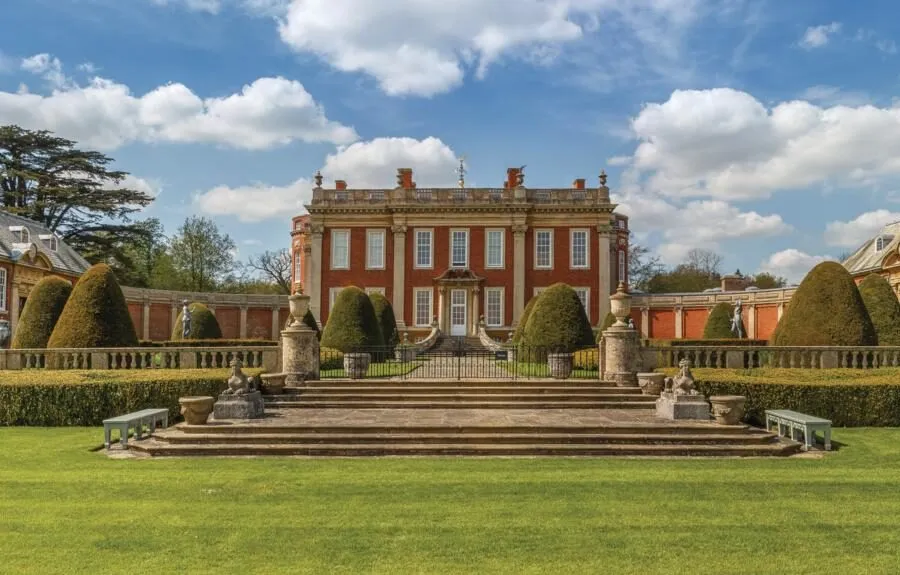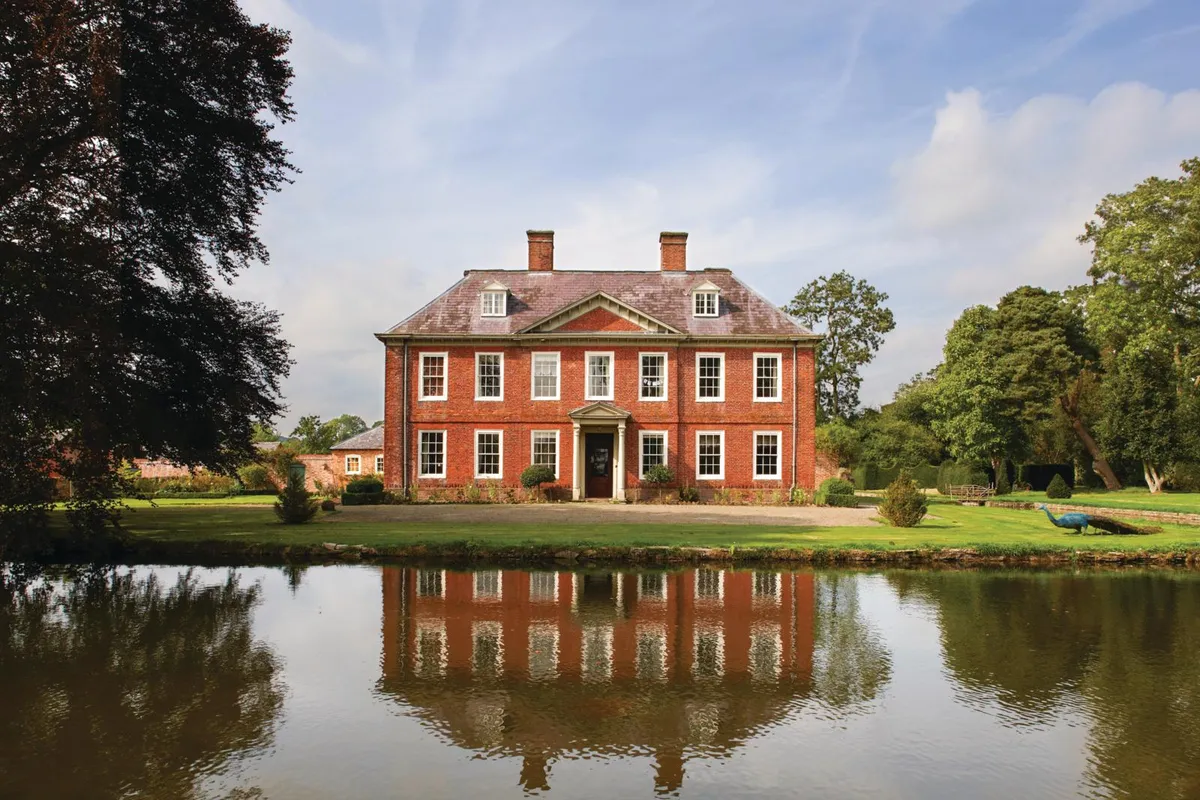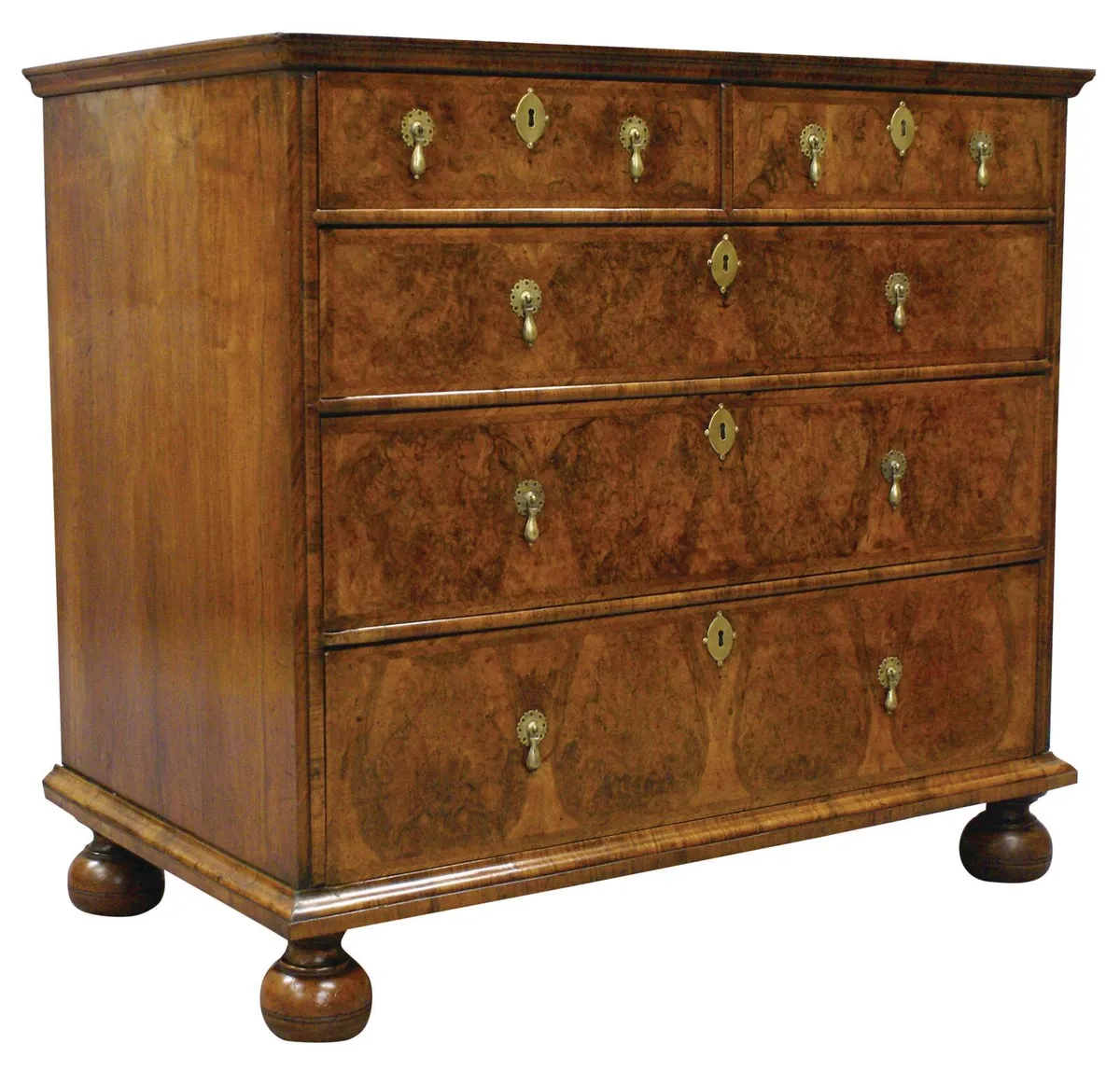Think of a classic dolls’ house and you’ll probably picture a perfectly symmetrical building with soft red-brick walls, tall sash windows, detailing around the front door and a hipped roof with dormers. What you are seeing is the 18th-century Queen Anne manor or townhouse.
While they weren’t known as Queen Anne houses during her short reign, the style has come to be associated with a very English queen. ‘It was quintessentially English and still is,’ says Nigel Anderson of Adam Architecture, which specialises in classical and traditional buildings. ‘It’s
what our clients want. The style has a completeness. The proportions are right.’
You might also like British house styles across the ages
Born in 1665, Anne was the daughter of James, Duke of York (later James II) and Anne Hyde. She came to the throne in 1702 following the death of her brother-in-law William III (William of Orange of the Netherlands), who had married her sister Mary II to form an Anglo-Dutch alliance against France.
In her first speech to Parliament, Anne emphasised her Englishness in a reproach to her Dutch predecessor, who had cared little for either the country or its people: ‘As I know my heart to be entirely English, I can very sincerely assure you there is not anything you can expect or desire from me which I shall not be ready to do for the happiness and prosperity of England.’
After a chaotic preceding century of revolution, civil war, religious division and the Restoration, Queen Anne’s reign ushered in a more settled period. It would see the union of England and Scotland in 1707 and bring the War of the Spanish Succession to a conclusion shortly before her death in 1714. England was prospering.
The early 18th century witnessed the emergence of modern banking, which promoted commercial and industrial growth. Trading companies such as The East India Company were expanding commerce around the world and making merchants money, and the Church was becoming richer.
Queen Anne architecture
With a more stable nation and an expanding moneyed class, major new building works began. It was no longer the preserve of aristocracy to fashion and furnish grand houses. ‘The most archetypal Queen Anne house I’ve seen over the years is Poulton House near Marlborough from 1706. It’s a beautiful thing,’ says Nigel. ‘A mini version of houses like nearby Ramsbury Manor or Uppark House in West Sussex.’

Uppark was built in the 1690s for the Earl of Tankerville and is attributed to William Talman, who was Comptroller of the King’s Works under Sir Christopher Wren. Each of these houses exemplifies the key ingredients of the Queen Anne style. ‘The characteristics of Queen Anne architecture are stone dressings such as quoins, exposed brick, hipped roofs, dormer windows, sash windows, platbands and cornices,’ says architectural historian and paint expert Edward Bulmer.
You might also like a writer's red brick home in Dorset
The style blends elements of European architecture that were cherry-picked from the continent and applied to buildings throughout the 17th century. The classical components such as pediments and symmetry were of Roman origin, introduced by Inigo Jones in the early 1600s, ornaments were French (Charles II and his court adopted French tastes while in exile in France) while the sash windows and exposed red brick can be attributed to the Dutch, whose influence grew when William of Orange took the throne. ‘What people think of as Queen Anne style began slightly earlier in the William and Mary period in the late 17th century,’ explains Edward. ‘It’s a sort of plainness and dignified restraint.’

Sir Christopher Wren was a key architect before and during Queen Anne’s reign, most famous for his ecclesiastical buildings in London following the Great Fire in 1666. His use of red brick on works such as Queen Anne’s Orangery at Kensington and Winslow Hall in Buckinghamshire filtered down to townhouses being built in market towns and the expanding cities around the country (Queen Square in Bristol, for example) as well as new streets in the capital.
Queen Anne Furniture
Then there was the furniture to fill these houses. Pieces began to feature the plainer cabriole leg with a pad foot, and wing chairs became more commonplace. Much like the exterior, the Dutch played a role. ‘During William and Mary’s reign, the Dutch were so influential in our taste,’ says Lennox Cato, 18th-century furniture dealer and Antiques Roadshow specialist.
But while Dutch pieces were still busy, the furniture that was developed in the Queen Anne period was more pared back. Instead of using showy carving and marquetry, English cabinetmakers displayed their skills by making sturdy, well-built pieces that used good materials and concentrated on form.

‘What made this period of furniture so distinctive was the restraint,’ says Lennox. ‘It was also the golden age of walnut. The pieces spoke for themselves. Take a Queen Anne chair – the whole thing is beautifully balanced. It has nice cabriole legs, a bell-shaped seat, a vase-shaped splat. The top of the chair has a cupid’s bow that is a soft wave of undulation. The bars either side of the splat are beautifully cross-banded on a moulding.’
Furniture changed as people’s lifestyles changed. The William and Mary escritoire, for instance, was adapted to include a toilet mirror atop. Mirrors became an important part of decoration as more people chose to wear make-up and powder. The Dutch influenced silverware too but it was the French who had the biggest impact. ‘The real change was the French Huguenots and Protestants coming to London to escape persecution in France,’ says Harry Williams-Bulkeley, Christie’s International Head of Silver.
Queen Anne silverware
Where once cups were raised up from a sheet of metal, they were now cast. And, in 1697, it was ruled that bowls, cups and spoons had to be made from Britannia silver, 95.8 per cent pure instead of sterling silver at 92.5 per cent, to stop silversmiths melting the coinage. Spoons and cups had been melted down to pay for the Civil War and, by the late 17th century, currency was being used to make tableware.
You might also like how to clean antique silver
Much silver was made for display. ‘Silver would be piled on a table in front of guests as a way of saying, “Look how wealthy I am”,’ says Harry. ‘The grandest houses would have a wine cistern that could weigh up to 1,000 oz.’ Pieces that emerged on tables include the two-handled cup and cover, pepper casters, trencher salts and soup tureens. Among the best makers of the day were Philip Rollos and Pierre Patel. ‘Queen Anne-period silver is generally plainer, has an architectural outline to it and is very good quality,’ says Harry. ‘It is heavyweight.’

The style persisted into George I’s reign (1714-1727) but George II’s ascension coincided with Italian architect Andrea Palladio’s Four Books of Architecture, which was published in English during the early 18th century. Palladio’s influence would see more formal, austere architecture emerge. Interiors, meanwhile, would become highly ornamental as rococo took hold.
What began as a melting pot of foreign tastes and ideals had, by the time of Anne’s death in 1714, evolved into a style that had somehow become intrinsically English. A form that was emulated by tastemakers in the American colonies, who craved a piece of England on the other side of the Atlantic. It was then revived in the Victorian era as a statement of English vernacular. A style that remains synonymous with Englishness today.